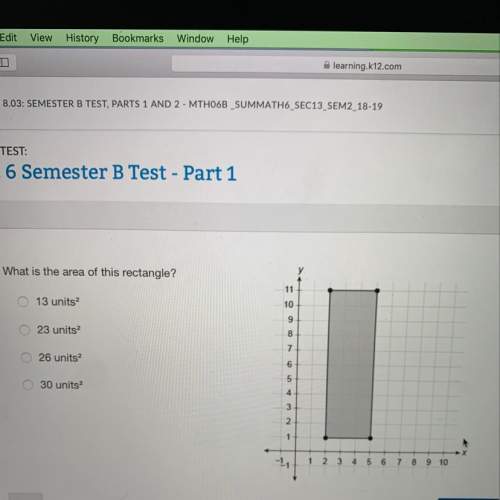
Mathematics, 16.12.2019 23:31 ccory0626
After all students have left the classroom, a statistics professor notices that four copies of the text were left under desks. at the beginning of the next lecture, the professor distributes the four books in a completely random fashion to each of the four students (1, 2, 3, and 4) who claim to have left books. one possible outcome is that 1 receives 2's book, 2 receives 4's book, 3 receives his or her own book, and 4 receives 1's book. this outcome can be abbreviated as (2, 4, 3, 1).
list the 23 other possible outcomes.
a) { (1, 2, 3, 4), (1, 2, 4, 3), (1, 3, 4, 2), (1, 4, 3, 2), (1, 4, 2, 3), (2, 1, 3, 4), (2, 3, 4, 1), (2, 3, 1, 4), (2, 1, 4, 3), (2, 4, 1, 3), (3, 1, 2, 4), (3, 1, 4, 2), (3, 4, 1, 2), (3, 4, 2, 1), (3, 2, 1, 4), (3, 2, 4, 1), (4, 1, 2, 3), (4, 1, 3, 2), (4, 2, 1, 3), (4, 2, 3, 1), (4, 3, 1, 2), (4, 3, 2, 1) }
b) { (1, 2, 3, 4), (1, 2, 4, 3), (1, 3, 4, 2), (1, 4, 3, 2), (1, 4, 2, 3), (1, 3, 2, 4), (2, 1, 3, 4), (2, 4, 3, 1), (2, 3, 4, 1), (2, 3, 1, 4), (2, 1, 4, 3), (2, 4, 1, 3), (3, 1, 4, 2), (3, 4, 1, 2), (3, 4, 2, 1), (3, 2, 1, 4), (3, 2, 4, 1), (4, 1, 2, 3), (4, 1, 3, 2), (4, 2, 1, 3), (4, 2, 3, 1), (4, 3, 1, 2), (4, 3, 2, 1) }
c) { (1, 2, 3, 4), (1, 2, 4, 3), (1, 3, 4, 2), (1, 4, 3, 2), (1, 4, 2, 3), (1, 3, 2, 4), (2, 1, 3, 4), (2, 4, 3, 1), (2, 3, 4, 1), (2, 3, 1, 4), (2, 1, 4, 3), (2, 4, 1, 3), (3, 1, 2, 4), (3, 1, 4, 2), (3, 4, 1, 2), (3, 4, 2, 1), (3, 2, 1, 4), (3, 2, 4, 1), (4, 1, 2, 3), (4, 1, 3, 2), (4, 2, 1, 3), (4, 2, 3, 1), (4, 3, 1, 2), (4, 3, 2, 1) }
d) { (1, 2, 3, 4), (1, 2, 4, 3), (1, 3, 4, 2), (1, 4, 3, 2), (1, 4, 2, 3), (1, 3, 2, 4), (2, 1, 3, 4), (2, 3, 4, 1), (2, 3, 1, 4), (2, 1, 4, 3), (2, 4, 1, 3), (3, 1, 2, 4), (3, 1, 4, 2), (3, 4, 1, 2), (3, 4, 2, 1), (3, 2, 1, 4), (3, 2, 4, 1), (4, 1, 2, 3), (4, 1, 3, 2), (4, 2, 1, 3), (4, 2, 3, 1), (4, 3, 1, 2), (4, 3, 2, 1) }
e) { (1, 2, 3, 4), (1, 2, 4, 3), (1, 3, 4, 2), (1, 4, 3, 2), (1, 4, 2, 3), (1, 3, 2, 4), (2, 1, 3, 4), (2, 3, 4, 1), (2, 3, 1, 4), (2, 1, 4, 3), (2, 4, 1, 3), (3, 1, 2, 4), (3, 1, 4, 2), (3, 4, 1, 2), (3, 4, 2, 1), (3, 2, 1, 4), (3, 2, 4, 1), (4, 1, 2, 3), (4, 2, 1, 3), (4, 2, 3, 1), (4, 3, 1, 2), (4, 3, 2, 1) }

Answers: 1


Another question on Mathematics

Mathematics, 21.06.2019 19:10
Which ordered pair is a solution of the equation? y + 5 = 2(2+1) choose 1 answer ® only (5,10 ® only (-1,-5) © both (5, 10) and (-1,-5) 0 neither
Answers: 1

Mathematics, 21.06.2019 19:30
Needmax recorded the heights of 500 male humans. he found that the heights were normally distributed around a mean of 177 centimeters. which statements about max’s data must be true? a) the median of max’s data is 250 b) more than half of the data points max recorded were 177 centimeters. c) a data point chosen at random is as likely to be above the mean as it is to be below the mean. d) every height within three standard deviations of the mean is equally likely to be chosen if a data point is selected at random.
Answers: 2

Mathematics, 21.06.2019 19:30
The amount spent on food and drink by 20 customers is shown below what is the modal amount spent ?
Answers: 1

Mathematics, 21.06.2019 21:30
Find the missing dimension! need asap! tiny square is a =3025 in ²
Answers: 1
You know the right answer?
After all students have left the classroom, a statistics professor notices that four copies of the t...
Questions


History, 18.09.2021 01:00






Mathematics, 18.09.2021 01:00




Computers and Technology, 18.09.2021 01:00

Mathematics, 18.09.2021 01:00



History, 18.09.2021 01:00




Social Studies, 18.09.2021 01:00




